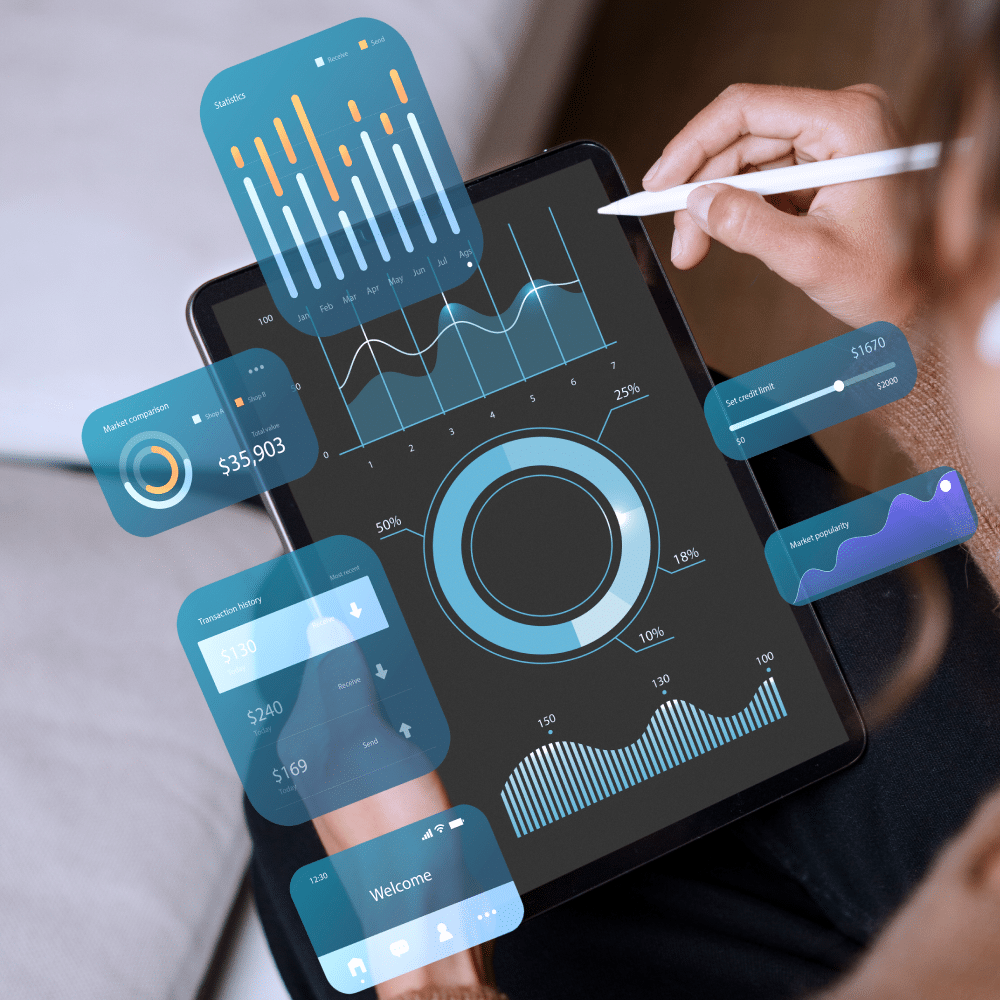Omnichannel journey: 5 tips for a smarter retail experience
In the era of omnichannel shopping, the siloed vision of retail that would separate physical points of sale and e-commerce no longer makes sense. More than ever, the buying journey is multi-channel, between screens and points of sale. We need to look at retail through the prism of a more global shopping experience to reinvent it, make it more fluid and offer it to consumers on a tailor-made basis. On the way to smart retail!
For more data quality info: Subscribe to our newsletter on Linkedin

For a long time, the retail sector has been equated to the brick-and-mortar world, where shops are on the street. This paradigm has largely evolved with the digitalization of consumption modes-Today, customer journeys take place both online and offline – and more often than not both at the same time.
In France, one consumer out of two now uses his or her cell phone to buy on the Internet (study conducted by OpinionWay in January 2021), while an increasing proportion of the population does their shopping “behind a screen” using the drive, delivery or self-scanning in store (a phenomenon that has accelerated with the health crisis linked to COVID). Not to mention those who start shopping on the Internet (looking for products, reviews, coupons), go to the store to try or see, before finalizing it on the spot or online.
So how can we create real synergies between the digital and physical worlds, to make the shopping experience more mixed and intelligent?
#1 Shop everywhere & everytime
Filling the fridge on Sundays, strolling online or in a store during the week, validating a purchase on the move or having it delivered to work… consumers want to access products according to their lifestyle and their desires. The boundaries that separate the physical and digital worlds need to be broken down in order to bring them together and establish continuity of experience, whatever the channel (website, social networks, mobile app, newsletters, physical points of sale).
Not to mention that consumers expect a lot from social networks, through “social shopping”, which should no longer be satisfied with inspiring them to make a purchase as easily as possible. This is the path taken by the giants Instagram and Pinterest, with the implementation of “Buy” and “Shop the look” buttons.
In two clicks, the user goes from the desire to buy to the transaction. The cell phone is therefore the “armed wing” of omnichannel, but the purchasing experience must be optimized. It is therefore necessary to think about how to remove the obstacles linked to the creation of an account in a few clicks, to seamless identification, to the fluidity of the navigation and ergonomics of the mobile site or app, to the security of payments…
#2 Points of sale in full "e-mutation"
Major retailers have begun to create places with a strong identity within emblematic flagships, but we are still far from seeing the widespread use of connected windows that encourage interaction from the doorstep, augmented reality tools, touch screens in the booths that allow customers to send themselves a selfie of their fitting or ask the sales staff for a different size, etc. However, digitalization is accelerating, with a craze for connected furniture that boosts the “phygital” experience. They allow for an innovative scenarization, by creating an original and participative immersion in the brand universe. People no longer necessarily come to the store to buy, but to live something… an experience.
The cell phone can be used to manage different levels of the purchasing process thanks to geo-personalized messages to attract customers to the store, contextualized pushes, easy payment, and tracking of in-store behavior.
And to complete a reinvented experience, it is necessary to involve sales advisors. Equipped with clienteling applications embedding the CRM, they evolve into augmented advisors, to guide the consumer in a tailor-made customer relationship. As long as the CRM is fed with quality and reliable customer data, which can then be effectively used live!
#3 Gathering consent at point of sale
Why spend a fortune on advertising campaigns and imagine the best on- and off-line devices to generate traffic in the points of sale, if you don’t know how to capitalize on these visitors in order to animate them in a second time?
Collecting consent from each customer in a transparent manner, whether at the point of sale or during a phone call, must be as much a priority as collecting consent online.
And who better than the sales consultant to contribute to the consent collection effort and therefore to the acquisition strategy?
#4 Reciprocal engagement in omnichannel
Consumers are now ready to engage with brands. But are these brands mature enough to commit themselves in return over time without immediate business benefits?
Because reciprocity is not an empty word, it is up to retailers to think about the type of exchanges they wish to establish, by proposing schemes that go further than the old-fashioned loyalty programs. Points-based programs triggering cash-back discounts are fine, but perhaps the consumer expects to be valued differently. Why not give value to each of their interactions, to each expression of interest, to registering for a newsletter, to looking at an article on the website, to participating in a game… or even to visiting a store without buying?
A mark of interest that will surely translate into a mark of trust generating data, which will allow to start a promising relationship program with the consumer. The challenge will also be to know how to intelligently and moderately capture this data in order to be able to recognize them as they move through the site and interact with it.
This customer knowledge, a prerequisite for recognition at each touchpoint, is the foundation of a relationship of trust. The commitment that the brand will bring to them thanks to a personalized valorization will in return generate their own commitment.
#5 Smart data, or nothing!
To confirm the convergence of multi-channel paths, customer knowledge must be reunified. The way data is collected is therefore crucial. Contact data, up-to-date history for smooth paths, anticipation of needs, use of artificial intelligence for effective predictive scenarios… it must be captured at all points of contact and returned in a complete and coherent way to all the people likely to interact with the customer.
Another battle horse, central to the relationship of trust: the collection of customer consent must be systematic, simple and transparent. And highlight the consumer’s interest in sharing their data, in order to benefit from a personalized customer journey, dedicated offers and to validate their commitment. This approach will avoid shopping cart abandonment when an online account has to be created, refusal to communicate personal information in the store at the checkout…
It is by inventing customer journeys that encourage the collection of quality data – and therefore only useful data – that brands and customers will engage in a virtuous circle, that of journeys that are themselves smarter and win-win for all parties.
About DQE
Because data quality is essential to customer knowledge and the construction of a lasting relationship, since 2008, DQE has provided its clients with innovative and comprehensive solutions that facilitate the collection of reliable data.



